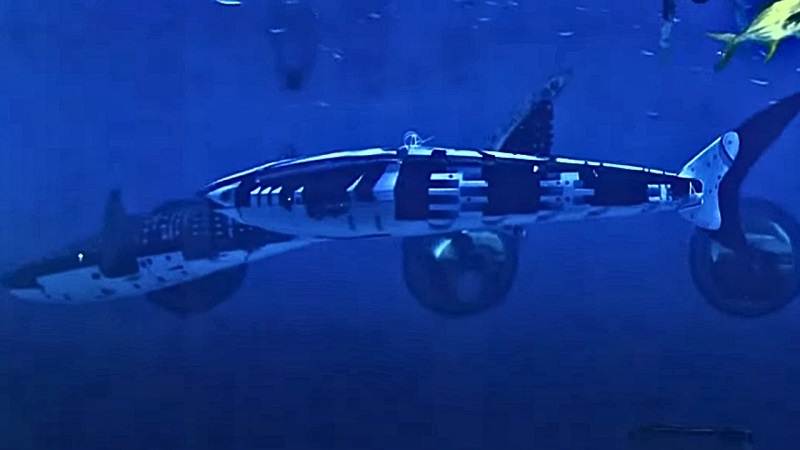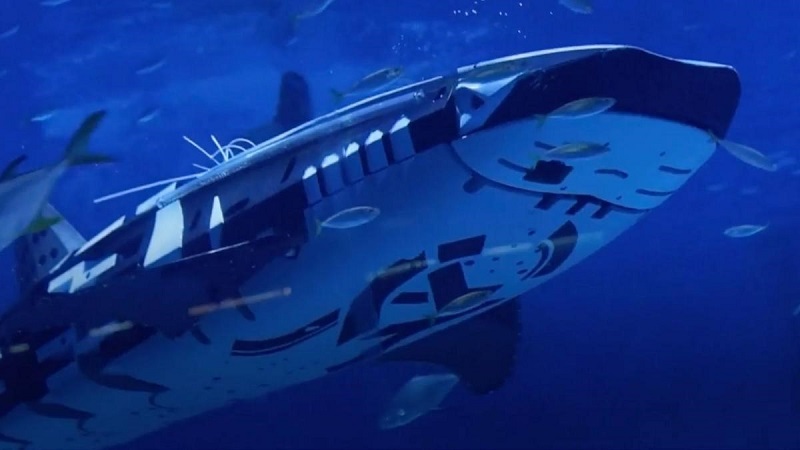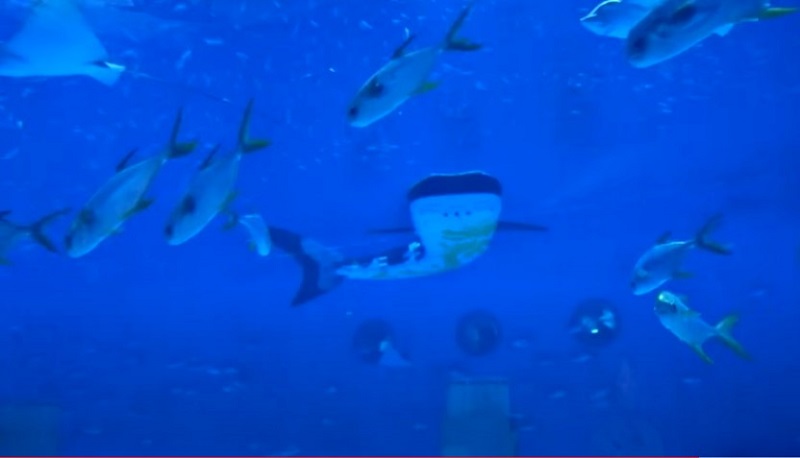


On August 6, 2024, Shenyang Aerospace Xinguang Group, a key player under the Third Academy of China Aerospace Science and Industry Corporation Limited, introduced a revolutionary innovation—the world’s first intelligent robotic whale shark. This creation is a striking example of how aerospace technologies are being adapted for marine environments, pushing the boundaries of what’s possible in underwater robotics.

Source: YouTube: CGTN
The robotic whale shark is an engineering feat, stretching nearly five meters long and weighing in at 350 kilograms. Its design intricately mirrors the natural anatomy and movement of a real whale shark. With seven actuated joints, this robotic creature is capable of fluid, lifelike movements, including swimming, turning, floating, diving, and even mimicking the mouth movements of its biological counterpart.

Source: YouTube: CGTN
This robotic marvel comes equipped with a suite of advanced technologies, including wireless remote control, pre-programmed swimming patterns, and a sophisticated multi-joint bionic propulsion system. It can achieve speeds of up to 0.7 meters per second and dive to depths of 20 meters. The robot is also outfitted with optical cameras, various sensors, sonar, and a BeiDou positioning system, making it ideal for tasks like monitoring water quality and mapping underwater terrain.
Source: China Daily
Fang Xuelin, who serves as the assistant director of the Underwater Propulsion Technology Research Office, shed light on the technical challenges encountered during the development process. A significant obstacle was the integration of sensor data, requiring the creation of a responsive “brain” for the robot. This system processes vast amounts of information from multiple sensors to ensure the robot can navigate complex underwater environments effectively.
Source: YouTube: CGTN
One of the standout features of the robotic whale shark is its environmentally friendly design. Unlike traditional underwater robots that rely on propellers, this bionic shark utilizes a propulsion method that reduces water pollution and minimizes risks to marine life. Its streamlined, enclosed structure also reduces the chance of entanglement with underwater obstacles, making it a safer and more reliable tool for various underwater tasks.
Self-Powered Marine Robot: Source: YouTube
Following the successful creation of the whale shark, Shenyang Aerospace Xinguang Group has expanded its lineup of bionic marine robots to include models inspired by other marine creatures, such as the Yangtze finless porpoise, killer whales, and dolphins. This expansion underscores the potential of bionic technology in advancing marine exploration and research.
Source: YouTube: CGTN
The development of the intelligent robotic whale shark marks a pivotal moment in the evolution of marine robotics. As advancements in materials science, control systems, and artificial intelligence continue, we are likely to see even more innovative and capable robotic solutions emerge. These technologies will be instrumental in expanding our understanding of the oceans and enhancing our ability to interact with marine environments.
Source: YouTube: CGTN
The unveiling of the world’s first intelligent robotic whale shark by Shenyang Aerospace Xinguang Group represents a significant leap forward in marine robotics. This innovative design not only exemplifies the integration of advanced technologies into underwater exploration but also sets a new standard for environmentally conscious robotics. As these bionic creations continue to evolve, they promise to revolutionize the way we explore and study the underwater world, opening new possibilities for science and industry alike. As amazing as this article is the incredible video that gives you a clearer picture of the Chinese Robot whale shark in action.
As amazing as this article is the incredible video that gives you a clearer picture of the Chinese Robot whale shark in action.